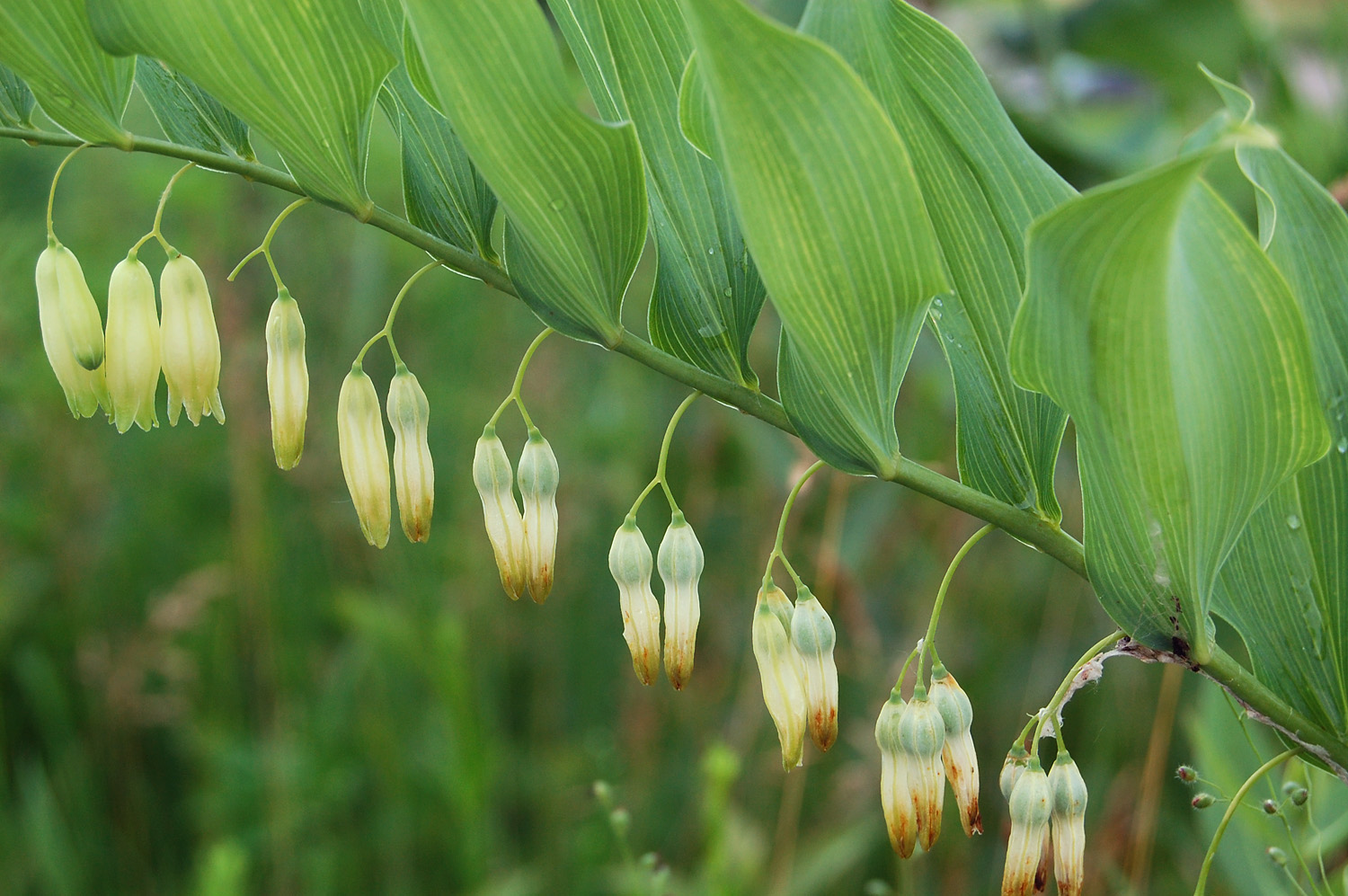Herbs, perennial, from long, knotty, creeping, occasionally branched rhizomes; leaf scars conspicuous; roots fibrous to fleshy. Stems simple, leafy, erect to arching, glabrous or pubescent. Leaves simple, alternate [opposite or verticillate], dispersed along stem, short-petiolate, subsessile, or clasping; blade ovate or lanceolate to linear, margins entire. Inflorescences racemose, with 1-10(-15) flowers on axillary peduncles, except for distal- and proximal-most axils; peduncle glabrous [pubescent]. Flowers nodding or pendulous; tepals 6, persistent, marcescent, connate basally into cylindrical tube, distinct, tips short, valvate; stamens 6, included, adnate to perianth tube; filament surfaces various; anthers basifixed [dorsifixed], dehiscence introrse; ovary superior, 3-locular, ovoid to globose; septal nectaries present; style slender, included; stigma capitate to obscurely 3-lobed; pedicel articulate, glabrous. Fruits baccate, dark blue to black [red], globose, glaucous, pulpy. Seeds yellowish tan to brownish olive, globose or subglobose, 3-4.5 mm. x = 10 [9-15].
Polygonatum is a member of the Polygonatae, a tribe now assigned to the Ruscaceae sensu lato (P. J. Rudall et al. 2000) or a more narrowly defined Convallariaceae (J. G. Conran and M. N. Tamura 1998; J. Yamashita and M. N. Tamura 2000). It is a complex genus with some species that are highly variable and wide-ranging, and others that are not. The flora provides examples of both. Polyploids arising from different base numbers and hybridization contribute to generic variation. The North American species all have x = 10, in contrast to variable base numbers among the Eurasian species (S. Kawano and H. H. Iltis 1963; E. Therman 1950, 1953, 1953b; M. N. Tamura 1993, 1995).
In Polygonatum, filament morphology and level of tube insertion provide useful distinctions at the species level (M. N. Tamura 1993). Bee vibration, associated with the pendulous perianth tubes, which include the anthers and style, is an essential feature of the pollination system (A. S. Corbet et al. 1988).
Young shoots and leaves can be boiled and eaten like asparagus, while the rhizomes reportedly have been dried and ground into flour or boiled and eaten like potatoes (L. Peterson 1978). Numerous eastern North American tribes, including the Cherokee, Chippewa, Iroquois, and Menominee, used plants of the genus as an analgesic or stimulant, or as a dermatological, cathartic, gynecological, and gastrointestinal aid (D. E. Moerman 1986). The berries contain an anthraquinone that causes vomiting and diarrhea.
The arching stems and fine foliage of Polygonatum add architectural interest and focus to woodland shade gardens. In addition to the native species, the Eurasian P. odoratum (Miller) Druce and the hybrid, P. ×hybridum Brügger (P. multiflorum × P. odoratum), are commonly cultivated. The European P. multiflorum (Linnaeus) Allioni has been reported as locally naturalized in eastern Ontario and southern Quebec (B. Boivin 1967c).
Perianth regular, tubular, shortly 6-lobed; stamens included, inserted on the perianth-tube; anthers introrse, oblong-linear or sagittate; ovary ovoid to globose, 3-locular; ovules numerous in each locule; style slender, shorter than the perianth; stigma capitate, obscurely lobed; fr a dark blue or black, several-seeded berry; herbs from a knotty rhizome with conspicuous large scars marking the position of previous stems; stem erect or arching, bearing in the upper part numerous alternate lvs in 2 ranks and short, axillary, 1-15- fld peduncles with pendulous, white to greenish or yellow fls. 50, N. Temp.
Gleason, Henry A. & Cronquist, Arthur J. 1991. Manual of vascular plants of northeastern United States and adjacent Canada. lxxv + 910 pp.
©The New York Botanical Garden. All rights reserved. Used by permission.





